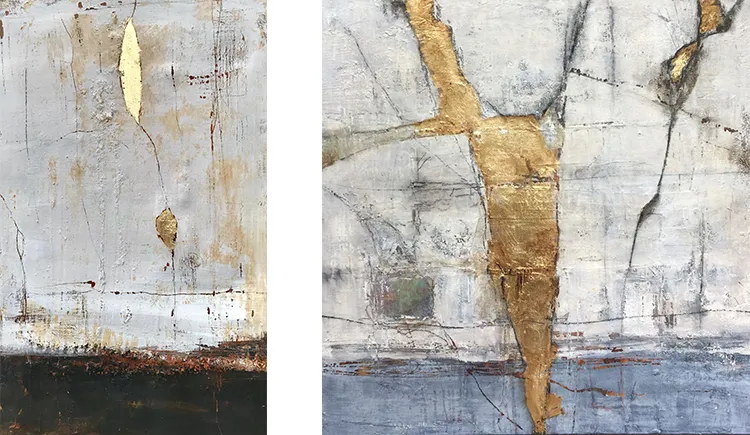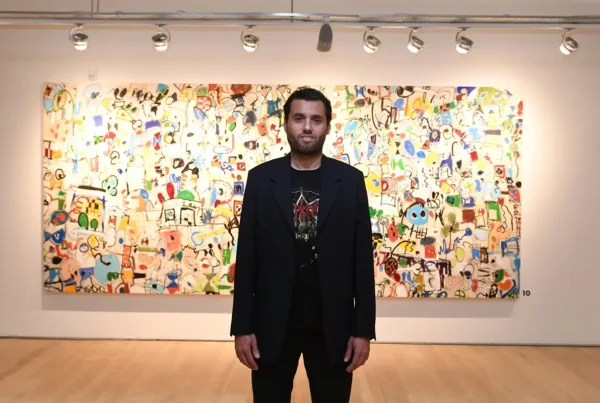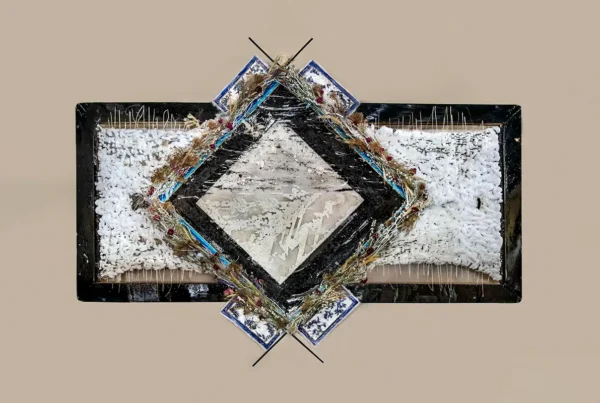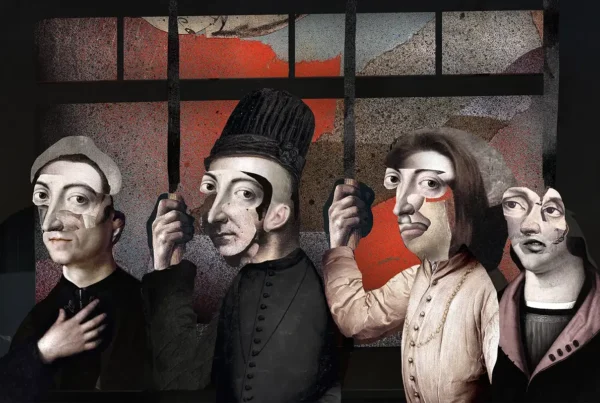“Transformation comes not from perfection, but from allowing ourselves to break open.”
From Literature and Medicine to Art: A Journey of Synthesis
Maya Malioutina’s artistic path is anything but conventional. With academic roots in English and Russian literature and a deep curiosity about science and medicine, she initially envisioned a future in the medical field, even completing Columbia University’s Pre-Med Post Bac program. However, she ultimately found her true calling in the act of painting—where intellect, intuition, and emotion could merge into a singular, expressive language. This multidisciplinary foundation continues to shape her work, allowing her to explore human experience through a richly layered perspective.
Her background in literature instilled in her a sensitivity to subtext—the ability to recognize meaning beyond what is immediately visible. Medicine, on the other hand, gave her an intricate understanding of the body as a vessel for experience, transformation, and memory. Art became the space where these influences coalesced, enabling her to translate the intangible—emotions, psychological landscapes, and spiritual inquiries—into visual form. Each painting is a layered excavation, revealing the complex interplay between the seen and unseen, the external and internal.
Malioutina’s work is not simply about representation but about discovery. She approaches the canvas as a space for transformation, much like how a story unfolds in literature or how the body heals and adapts in medicine. Through texture, movement, and depth, she constructs compositions that invite the viewer into a process of self-exploration. Her paintings do not offer easy conclusions but rather act as open-ended narratives—portals into moments of becoming, shedding, and reemerging.
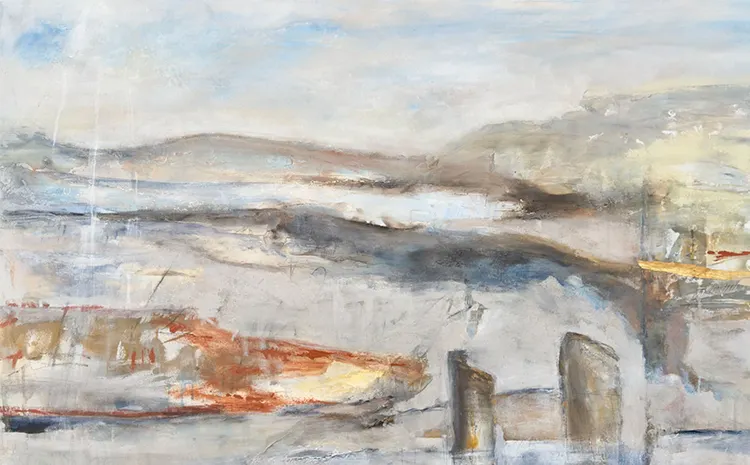
Maya Malioutina: The Alchemy of Texture and Emotion
At the heart of Malioutina’s artistic process is a deep engagement with materials. Her paintings are built through layers of acrylic, charcoal, and gold or silver leaf, each element adding a distinct dimension to the work. Texture plays a crucial role, serving as both a physical and symbolic representation of transformation—cracks, raw surfaces, and metallic accents coexist, echoing the tension between vulnerability and resilience. This tactile quality creates a visceral connection, inviting viewers to not only see but to feel the depth within each piece.
Transformation is a recurring theme in her work. Rather than depicting fixed states, she captures the fluidity of personal and spiritual evolution—the act of breaking open to reveal something deeper, more authentic. Her compositions often evoke a sense of movement, as if the forms are in the midst of shifting, dissolving, or reassembling. This reflects her belief that growth is not about reaching a final state of perfection but about embracing the continuous process of unfolding.
In recent years, her exploration has expanded to include questions of divinity, self-discovery, and the relationship between the human experience and the universe. Painting, for her, is a form of communion with something greater than herself—a way of giving form to the ineffable. Her work serves as a bridge between personal introspection and the vastness of existence, offering a space where viewers can contemplate their own connection to the unseen forces that shape them.
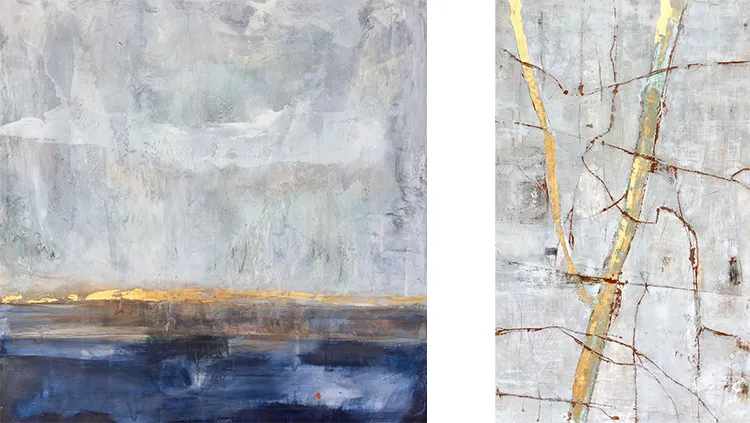
The Light Within: A Philosophy of Imperfection
One of Malioutina’s most significant series, The Light Within, embodies her belief that true transformation arises not from perfection but from embracing imperfection. A standout piece from this collection, Awakening, holds profound meaning for her as both an artist and an individual. The painting’s composition is rich with texture—cracked surfaces, rusted underpainting, and shimmering gold leaf—all of which symbolize the beauty found in what is broken, weathered, and reassembled.
This piece marked a pivotal shift in her artistic journey. It was not just about creating a visually compelling work but about fully embracing a philosophy: that healing and evolution happen through our fractures, not despite them. The contrast of decay and radiance within the painting serves as a powerful metaphor for resilience—the idea that wounds can become sources of light, that destruction can pave the way for renewal.
By allowing imperfections to become integral to her work, Malioutina challenges conventional ideas of beauty and completeness. She invites viewers to see their own struggles and transformations reflected in the artwork, to recognize that personal evolution is not about erasing scars but about integrating them into something more profound. Through Awakening and the larger The Light Within series, she extends an invitation to embrace the complexities of growth—to find strength in vulnerability and meaning in the unfinished.
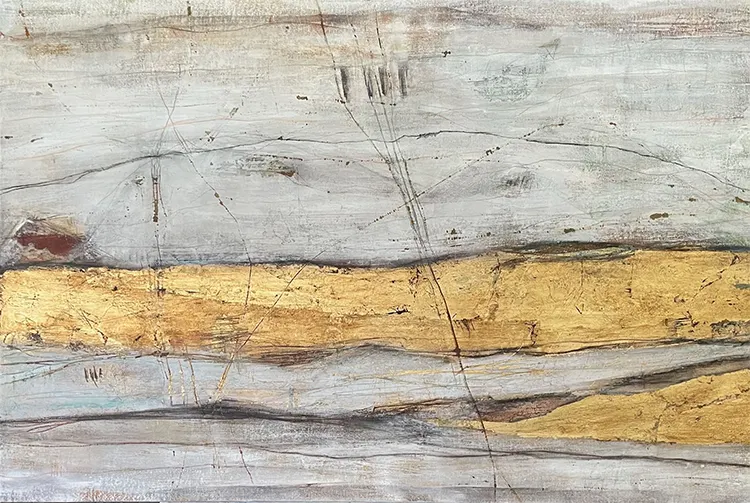
Maya Malioutina: The Immersive Future of Her Art
Looking ahead, Malioutina envisions taking her artistic practice beyond the canvas into an immersive, experiential realm. She dreams of creating a space where her paintings are not just seen but felt—a multi-sensory environment that mirrors the emotional landscapes she explores in her work. This envisioned project would incorporate shifting light, textured surfaces, and soundscapes that resonate with the energy of her paintings, offering viewers a deeper, more embodied experience of transformation.
The idea stems from her ongoing fascination with the intersection of self-discovery and art. She does not see painting as a static form of expression but as an evolving dialogue—one that can expand into new dimensions. By constructing an environment where viewers can physically enter the world of her paintings, she hopes to create a space for introspection, catharsis, and connection. Rather than passively observing, visitors would become active participants in the artwork, engaging with the themes of unfolding, surrender, and renewal on a visceral level.
Malioutina’s vision speaks to the broader trajectory of her work—one that continually pushes boundaries, both conceptually and materially. Whether through the textured surfaces of her canvases or the immersive spaces she hopes to create, her art remains a testament to the power of transformation. It is an ongoing exploration of what it means to break open, to reveal, and ultimately, to transcend.
